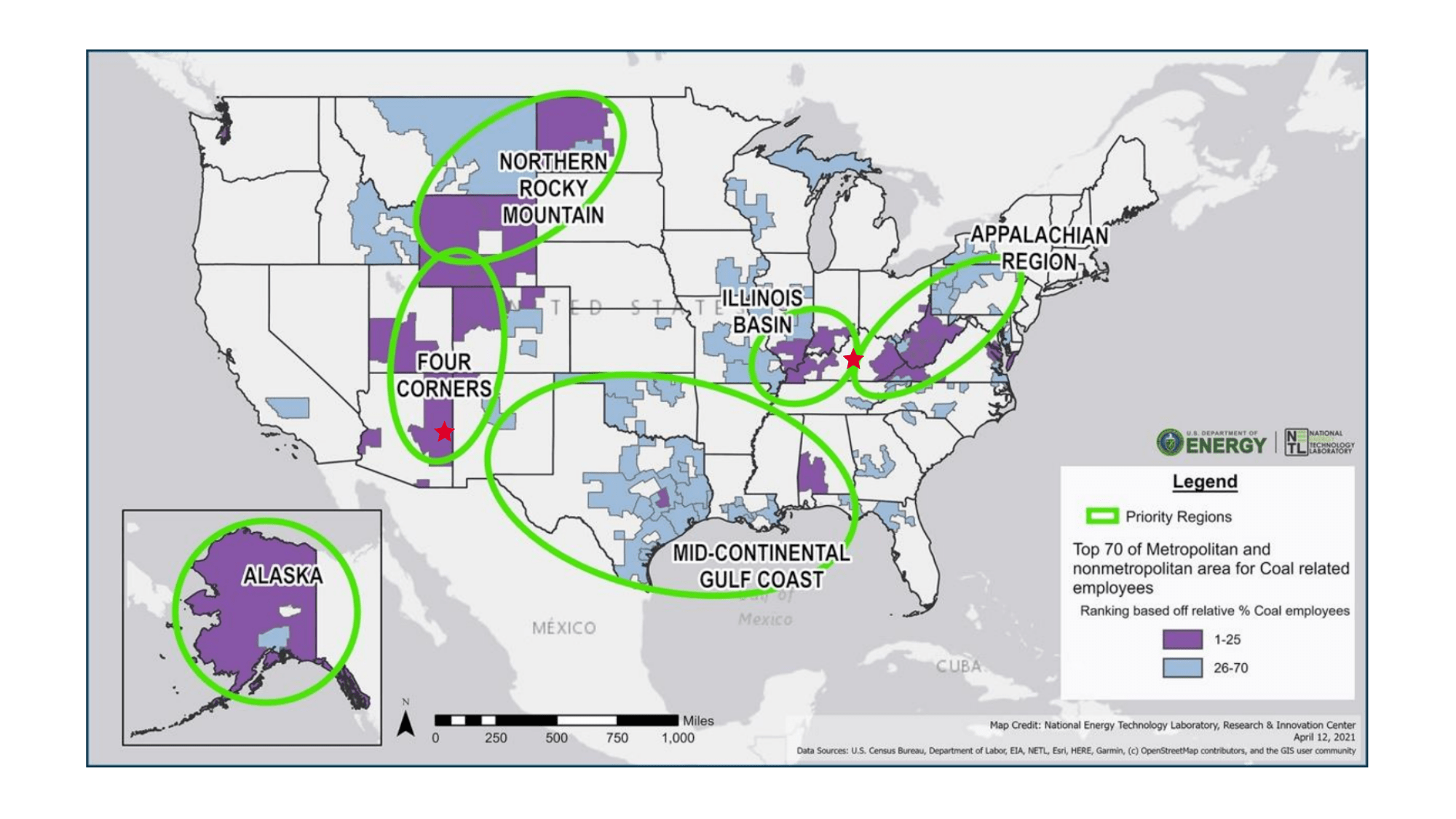
Transitioning to nuclear
As communities throughout our nation shift from predominately fossil fuel electricity generation to cleaner technologies, we see an incredible opportunity to support them and share the resources of the U.S. Department of Energy and its national laboratories.
The hundreds of retiring U.S. coal power plants are a good example of this. Many regions and utilities are assessing the possibility of repowering them to nuclear power plants, which could add new jobs, increase economic benefits, and significantly improve environmental conditions. Additionally, transitions like this would add a substantial amount of clean electricity to the grid, helping the U.S. reach its net-zero emissions goals by 2050.
GAIN’S EFFORTS
The GAIN team is engaging with nuclear-curious communities around the country as they consider advanced nuclear in their energy transitions. Learn more >
Economic Benefits
From creating permanent job growth to increasing economic activity, repowering coal sites with nuclear infrastructure can benefit the economy of a region. Learn more >
TYPES OF POTENTIAL SITES
Four types of sites can accommodate the addition of advanced nuclear technologies. Three of those can reuse former coal power plant sites. Learn more >
Environmental Benefits
Repowering hundreds of U.S. coal power plants to nuclear plants would increase the supply of clean energy and grow efforts to reach net-zero emission goals. Learn more >
Siting Considerations
When evaluating the transition of a coal power plant site to nuclear, numerous factors should be considered. Learn more >
Resources & News
Access the latest news and a range of resources about the coal-to-nuclear transition and its potential impact on our clean energy future. Learn more >
transition Benefits & Challenges
The U.S. Department of Energy recently released its Investigating Benefits and Challenges of Converting Retiring Coal Plants into Nuclear Plants report, which found that hundreds of U.S. coal power plant sites could be converted to nuclear power plants. This would help deliver huge gains to the nation’s net-zero goal and positively impact communities around the nation by increasing jobs, economic value and reducing pollution.
GAIN recently hosted a webinar, with the expert Systems Analysis & Integration team who conducted the study, during which they discussed the impacts the transition from coal to nuclear can make on communities.
Priority Regions for the Nuclear transition

As part of the study contained in the Investigating Benefits and Challenges of Converting Retiring Coal Plants into Nuclear Plants report, the research team identified 158 retired coal plants and 237 operating plants as potential candidates for a coal-to-nuclear transition.
The report determined that 80% of those potential sites, with over 250 GW of generating capacity, are suitable for hosting advanced nuclear power plants, and that while these nuclear power plants vary in size and type, they could be deployed to match the size of the site being converted.
